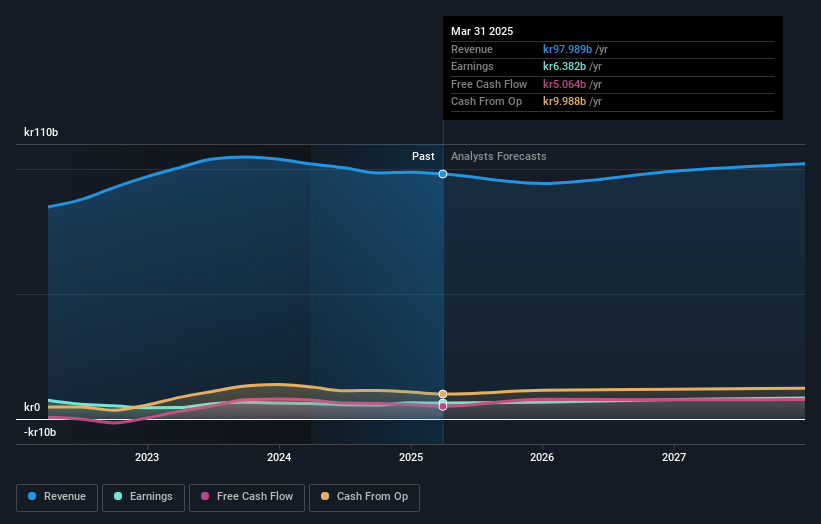AB SKF (publ) (STO:SKF B) Consensus Forecasts Have Become A Little Darker Since Its Latest Report
It's been a good week for AB SKF (publ) (STO:SKF B) shareholders, because the company has just released its latest quarterly results, and the shares gained 9.2% to kr190. Revenues came in 2.1% below expectations, at kr24b. Statutory earnings per share were relatively better off, with a per-share profit of kr3.95 being roughly in line with analyst estimates. Following the result, the analysts have updated their earnings model, and it would be good to know whether they think there's been a strong change in the company's prospects, or if it's business as usual. We've gathered the most recent statutory forecasts to see whether the analysts have changed their earnings models, following these results.
We've discovered 1 warning sign about AB SKF. View them for free.
Following the recent earnings report, the consensus from 18 analysts covering AB SKF is for revenues of kr94.2b in 2025. This implies a measurable 3.9% decline in revenue compared to the last 12 months. Statutory earnings per share are predicted to accumulate 5.4% to kr14.78. In the lead-up to this report, the analysts had been modelling revenues of kr100.2b and earnings per share (EPS) of kr16.08 in 2025. It's pretty clear that pessimism has reared its head after the latest results, leading to a weaker revenue outlook and a minor downgrade to earnings per share estimates.
View our latest analysis for AB SKF
It'll come as no surprise then, to learn that the analysts have cut their price target 5.2% to kr227. That's not the only conclusion we can draw from this data however, as some investors also like to consider the spread in estimates when evaluating analyst price targets. The most optimistic AB SKF analyst has a price target of kr280 per share, while the most pessimistic values it at kr190. These price targets show that analysts do have some differing views on the business, but the estimates do not vary enough to suggest to us that some are betting on wild success or utter failure.
These estimates are interesting, but it can be useful to paint some more broad strokes when seeing how forecasts compare, both to the AB SKF's past performance and to peers in the same industry. These estimates imply that revenue is expected to slow, with a forecast annualised decline of 5.1% by the end of 2025. This indicates a significant reduction from annual growth of 6.6% over the last five years. Compare this with our data, which suggests that other companies in the same industry are, in aggregate, expected to see their revenue grow 4.0% per year. It's pretty clear that AB SKF's revenues are expected to perform substantially worse than the wider industry.
The Bottom Line
The most important thing to take away is that the analysts downgraded their earnings per share estimates, showing that there has been a clear decline in sentiment following these results. Unfortunately, they also downgraded their revenue estimates, and our data indicates underperformance compared to the wider industry. Even so, earnings per share are more important to the intrinsic value of the business. The consensus price target fell measurably, with the analysts seemingly not reassured by the latest results, leading to a lower estimate of AB SKF's future valuation.
With that said, the long-term trajectory of the company's earnings is a lot more important than next year. We have estimates - from multiple AB SKF analysts - going out to 2027, and you can see them free on our platform here.
We don't want to rain on the parade too much, but we did also find 1 warning sign for AB SKF that you need to be mindful of.
Have feedback on this article? Concerned about the content? Get in touch with us directly. Alternatively, email editorial-team (at) simplywallst.com.
This article by Simply Wall St is general in nature. We provide commentary based on historical data and analyst forecasts only using an unbiased methodology and our articles are not intended to be financial advice. It does not constitute a recommendation to buy or sell any stock, and does not take account of your objectives, or your financial situation. We aim to bring you long-term focused analysis driven by fundamental data. Note that our analysis may not factor in the latest price-sensitive company announcements or qualitative material. Simply Wall St has no position in any stocks mentioned.
 Wall Street Journal
Wall Street Journal